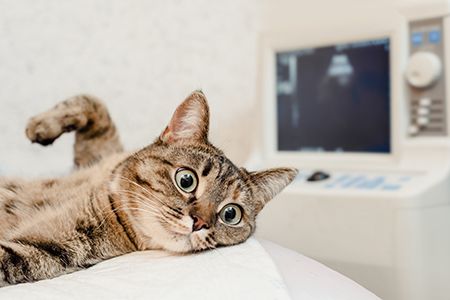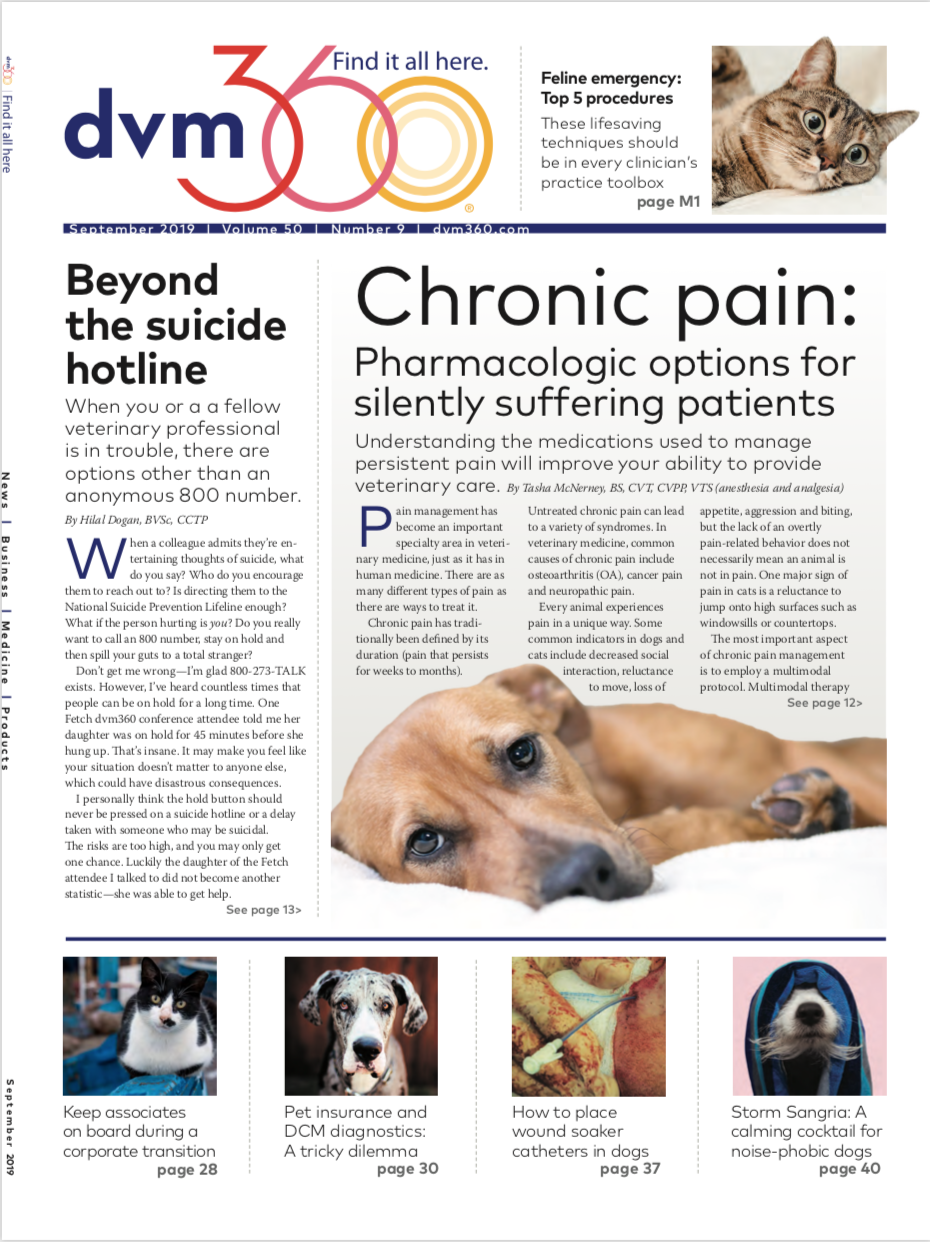Have you mastered these five feline emergency procedures?
Whether you work in general or emergency practice, you must feel comfortable performing certain emergency procedures. Here are the top five emergency procedures every veterinary practitioner who treats cats should know.
Denys Kurbatov/stock.adobe.com

Practice these five important feline procedures so you'll be ready to jump in the next time a critically ill patient arrives at your practice.
When a critically ill patient needs a life-saving procedure, your skills can make all the difference. According to critical care specialist Justine Lee, DVM, DACVECC, DABT, there are five important procedures that every veterinarian should learn to perform in cats. In a presentation at Fetch dvm360 conference in Baltimore, Dr. Lee explained why these procedures are critical and offered tips for improving your skills.
If you don't have as much confidence as you'd like, practice, Dr. Lee advised. “For almost any procedure, the more prepared you are and the more you set up ahead of time, the easier the procedure will go,” she said. “Also, if you perform one of these procedures in a critically ill patient that's dying in front of you, and you haven't done [the procedure] before, the likelihood of a successful outcome is poor unless you've practiced. When in doubt, try to practice on a deceased patient so you're proficient.”
1. Gaining venous access
Dr. Lee described alternative venous access options for critical patients, beginning with a quick method for doing a jugular cutdown. The procedure begins with a surgical prep over the jugular vein. Next, pull the skin slightly lateral and use a scalpel (preferably a #11 blade) to make a small incision parallel to (not over) the jugular vein. Use the “window” to visualize the jugular vein and place a peripheral intravenous catheter. Once the catheter is in place, place a small dab of surgical glue or a few simple interrupted sutures to close the skin incision.
In kittens, Dr. Lee recommended using a 23-gauge butterfly catheter instead of a jugular catheter. “Most of us can get a 23-gauge butterfly into the jugular,” she said. “I'll aggressively volume resuscitate these kittens to increase their blood pressure. Then, I can easily get a cephalic catheter in.”
Central lines are another option, but they're often overlooked because people think they're complicated or unnecessary. However, Dr. Lee noted that they're helpful for maintaining hydration in critically ill patients, facilitating phlebotomy or administering drugs that can cause perivascular irritation. She noted that if you have the skill to place a jugular catheter, you can place a central line.
2. Thoracentesis and abdominocentesis
When faced with a dyspneic cat, it's hard to resist jumping to aggressive diagnostics and treatments to get answers and stabilize the patient quickly. Dr. Lee recommends a more conservative initial approach. “When it comes to a dyspneic cat, a hands-off approach is best,” she advised. “These cats are already stressed, so don't manhandle them to get an intravenous catheter in or take an x-ray.”
Dr. Lee noted that she might give these patients something intramuscular to calm them, do a very brief exam, and put them on flow-by oxygen or place them in an oxygen cage. She also prefers to administer drugs via inhalation to dyspneic cats when possible, as these drugs have limited systemic effects and are delivered directly into the lungs. “I think every practice should have a fluticasone inhaler and an albuterol inhaler,” she said. When using an AeroKat device, she recommended filling the chamber first (i.e. with three puffs of inhalant) and then placing the chamber directly to the cat's face, as most cats resent the mist being sprayed into the device while it's on their face.
Dr. Lee reminded the audience that pleural effusion is the number one cause of dyspnea in cats, and congestive heart failure and cancer are the two most likely differentials. Other potential causes include pyothorax, chylothorax and asthma, she said. The supplies needed for thoracentesis are readily available at most practices: a 12- to 20-mL syringe, a three-way stopcock, a 22-gauge needle (possibly 1.5 inches long, depending on the cat) or butterfly catheter, an extension set and tubes for collecting fluid samples. Dr. Lee suggested that some cats may need light sedation for the procedure.
The preferred location for thoracentesis is the seventh to ninth intercostal space and cranial to the rib to reduce the likelihood of hitting a blood vessel. “If the cat is obese and you can't feel the ribs, find the xiphoid and draw an imaginary line up [the side of the chest]. That's usually the eighth intercostal space,” Dr. Lee said. Administering flow-by oxygen during the procedure is recommended, as is having an assistant lightly restrain the cat.
Abdominocentesis may be needed in cases of peritonitis or ascites. Dr. Lee recommended performing a sterile prep and using the umbilicus as a central focus. Then, you can tap in four quadrants.
She also recommended examining thoracentesis and abdominocentesis fluid samples in-house, so you get a faster diagnosis. If fluid samples are sent to the lab, she advised keeping additional samples for in-house analysis.
3. FAST and TFAST ultrasound
FAST, or focused assessment with sonography for trauma, refers to a very brief ultrasound study to identify fluid in the abdominal cavity. Dr. Lee advised, “If you have ultrasound equipment, it's good to be able to do a FAST evaluation.” Four quadrants are assessed: cranial to the bladder, caudal to the xiphoid, and left and right dependent flanks. FAST ultrasound is much more sensitive than ballottement for detecting ascites, especially when there isn't much fluid, she said.
TFAST, or thoracic focused assessment with sonography for trauma, involves a brief study of the thorax to detect pleural effusion, pericardial effusion or occult pneumothorax.
4. Placing a nasogastric or nasoesophageal tube
Dr. Lee noted, “We don't normally sedate cats for this. We just use a local (proparacaine).” She added that the procedure is simple; at her practice, well-trained technicians normally do it instead of doctors.
A major concern might be that the tube will accidentally enter the trachea, but Dr. Lee said the likelihood of that complication is very low. She added, however, that you can aspirate the tube to check for negative pressure. She also suggested confirming tube placement radiographically before instilling feeding solution.
5. Placing a chest tube
Dr. Lee described a revised procedure for placing a chest tube. Following sedation and a surgical prep, the traditional procedure involves using a scalpel blade to make a stab incision over the eighth intercostal space. Then, mosquito hemostats are used to dissect down to the intercostal muscles and introduce the chest tube into the pleural space.
Dr. Lee described a faster technique that involves feeding a jugular catheter through the eighth intercostal space and into the pleural space (as with a thoracentesis). Initially, remove the stylet and feed the sterile wire a few inches into the pleural space. Once the wire is in, remove the catheter from the pleural space, feed the dilator over the wire and into the pleural space, and feed the chest tube directly over the wire and into the pleural space. Then, remove the wire, suture the chest tube place like normal, and place a transparent film dressing on top of the area to protect it.
Whichever procedure is used, Dr. Lee advised taking dorsoventral and lateral chest radiographs to ensure correct tube placement.
Dr. Todd-Jenkins received her VMD degree from the University of Pennsylvania School of Veterinary Medicine. She is a medical writer and has remained in clinical practice for over 20 years. She is a member of the American Medical Writers Association and One Health Initiative.
